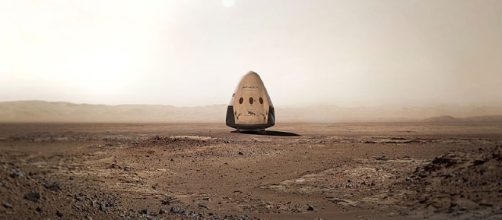SpaceX’s Elon Musk has formally informed NASA that the idea of a Red Dragon, a version of the workhorse Dragon spacecraft that would be equipped with retro rockets to land on Mars, is dead for the time being. Musk is now talking about a downsized version of his Interplanetary Transport System, which he discussed at length during a space conference last year, as the basis of his hopes for Mars exploration and eventual colonization. The SpaceX CEO has promised further details of his Mars plans next month.
A brief history of the Red Dragon
When Musk first proposed the Red Dragon, it was envisioned as being a cargo vehicle with side mounted retro rockets that would land cargo and other payloads on Mars.
He planned to launch the first mission in 2018 using a Falcon Heavy as the launch vehicle. Then the first flight of the Red Dragon was postponed to 2020.
NASA had promised to provide navigation and communications services for the Red Dragon mission as part of a Space Act agreement. The space agency, which has its own Mars ambitions, was keen to see what solution Musk had hit upon for powered landings on a planetary surface. However, for the time being, at least, work on the side mounted retro rockets have been placed on the backburner.
SpaceX concentrating on its core business
SpaceX has been concentrating on its core business of taking things and soon people to and from low Earth orbit. The company has achieved some success in making the Falcon 9 partly reusable and is working toward making the launch vehicle entirely reusable.
It is also working to starting to fulfill its obligations in the commercial crew program, starting to take astronauts to and from the International Space Station. On top of that, SpaceX will try to launch the Falcon Heavy later this year. That means that neither the time or resources are available for a serious private Mars effort.
Musk has not given up on Mars
This news does not mean that Musk has given up on his lifelong dream of starting a Mars colony. Last year he laid out a grandiose vision based on something called the Interplanetary Transport System, an immense rocket that would take 100 people at a time to Mars. Now Musk has announced that the ITS is going to be downsized to a certain extent. More details will be available in September 2017.
Meanwhile, NASA is waiting patiently, standing ready to support any private effort to go to Mars, when SpaceX can get around to it.


